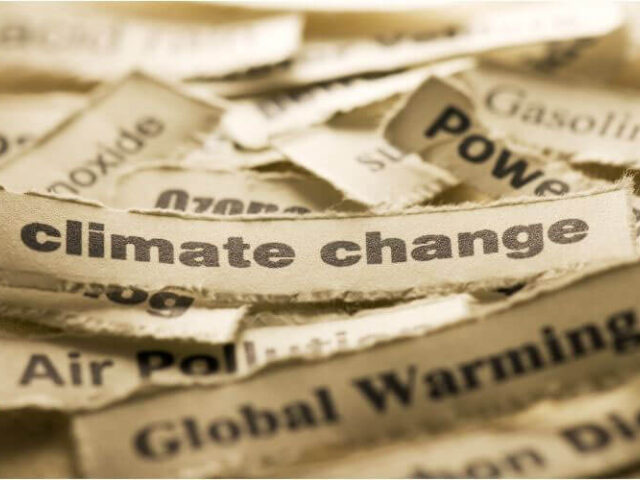Media Trends | Mar 24, 2022
Climate journalism is not disaster journalism

Everyone is talking about climate journalism, but what does that mean exactly? The Italian Radar magazine has set clear guidelines and points of reference for itself. One important factor is not only to report on catastrophes, but also to show approaches to solutions and to manage the transfer into the everyday life of the readership.
Climate and the environment are topics that are becoming increasingly important in mainstream media. Journalist Wolfgang Blau describes it so aptly: If you’re not a climate reporter yet, you will be”. Among other things, his prediction is based on the fact that young people are and will be confronted with greater challenges from climate change. This will increase interest in such topics. That sounds plausible, because climate disasters such as the floods in the German Ahr Valley are already demonstrating the role that information and reporting will play: Starting with a new understanding of service issues, in this example on weather and precipitation levels, to responsible and ethical reporting during and after the catastrophe.
Background reports are in demand
But climate will not only play a greater role in daily news media; understanding the changing climate also leads to a lack of information and more and more people have questions about it. Background reports, reportages and the transfer of scientific publications to an easily understandable text will be tasks of journalism. One example of holistic climate journalism is the online platform Radar. The startup is based in Italy, but works with journalists all over the world. Marta Frigerio, who looks after the readership at Radar, explains: "We want to show that climatic changes in the world are interconnected and at the same time that there are exciting approaches to dealing with the climate crisis. Radar focuses, for example, on reports that show what strategies are being pursued in other countries and what solutions can work. For example, the site reports on the death of olive trees in Apulia. "It depends on the topic: If there is data - we try to evaluate the existing research and database first. A reporter from us or a trusted freelancer is then on the ground, conducts interviews, takes the pictures and writes the article. Then, once we've pulled it all together, the article goes online", Marta says.
A recent example to show the lack of background reporting is the recent coverage of the Phenomenon of blood rain. In Germany, media covered an orange-coulered sky and explained that winds carried Saharan dust all the way to Europe. The service tip on how to remove the dust from cars again was also delivered, as the screenshot to the top news shows. If you dig a little deeper, you come across a scientific publication from 2020. A research team around Diane Francis published a paper linking the Saharan Dust Storm to the melting ice mass in the Arctic. The SZ reported on it in a short article in 2020, hinting at what climate journalism can look like. In the current mainstream media coverage, such transfers were hardly present.

Media coverage in March of the weather phenomenon
Climate reporting is also social justice
For the Italian Radar magazine, background reporting also includes linking social justice and climate. This is made clear, for example, in the article "For a handful of shrimp". The article shows what our shrimp consumption means for the ecosystem in Indonesia. Such holistic reporting is often neglected in the media: "It is important to us to show a different way of looking at things. Regularly, the media only report on one event and that's the end of the topic. We place a lot of emphasis on showing how climate change affects social justice, for example." What Marta is talking about can also be seen in German reporting.
Climate issues such as burning forests, volcanic eruptions and polluted oceans are picked up on, but the transfer to the importance here at home and the background often comes up short. "Green energy is not seen by many as the most essential issue. It's not tangible, and many don't realize how much it impacts their everyday lives. Because green energy impacts the economy or impacts immigration." Thus, according to Marta, "sustainable energy should be one of the most important topics."
Climate journalism needs a definition
Reporting on fauna, flora and nature is generally on the rise. Even Radar does documentaries about animals “but what is missing, is the bridge to our everday lives and the global problems behind it”, Marta says. A documentary about tigers usually leaves the viewers satisfied. Climate journalism would show how tiger extinction affects the natural cycle and what impact this has on the social and economic situation of the local people and, in the long term, on us in Europe. Climate journalism means making complex issues and contexts understandable to the layperson. In Germany, the mainstream media repeatedly launched task forces to give climate journalism more space. The Instagram channel klima.taz, for example, with over 47,000 followers, shows that there is interest in climate issues.
Independent media for critical climate reporting
Radar Magazine wants to remain independent. For Marta, this independence is a essential for holistic reporting: "We don't want to be dependent on large companies that book advertising with us. Because then we would probably have to leave them out of our reporting." So far Radar Magazine has a small but loyal community and continues to develop their startup at Google News Initiative Startups Lab Europe. Interest in climate journalism is growing, and the makers of Radar Magazine want to do better for a growing readership. They are currently planning new formats and have conducted a survey among users to find out where they can improve.

